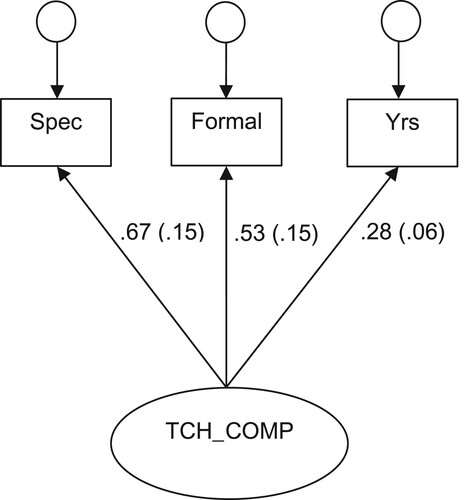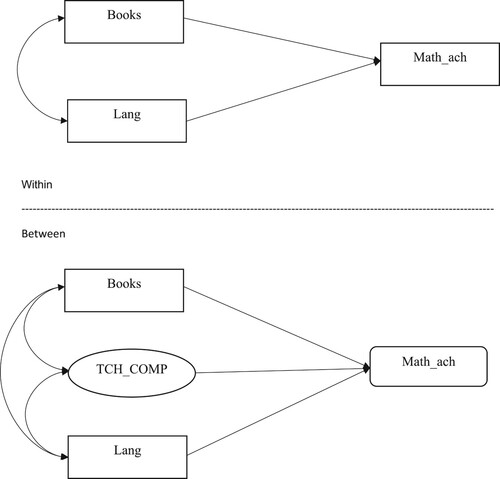Figures & data
Table 1. Teacher education categories in primary school 1972 – today.
Table 2. Demographics of participating teachers in TIMSS 2019.
Table 3. Frequencies of professional development in the past two years.
Table 4. Level of formal education completed.
Table 5. Descriptive statistics of Lang, Books, and Math_ach.
Table 6. Descriptive statistics of parent’s reported student skills before starting primary school.
Figure 2. Measurement model of latent mathematics teacher competence on between level.
Note: Coefficients are significant at p < .001.

Figure 3. Relations between mathematics teacher competence for primary school and student achievement.
Note: The relations between mathematics teacher competence for primary school and student achievement, controlled for student SES and immigrant background/classroom composition at the individual/classroom level.

Table 7. Means, standard deviations and correlations for dependent variable and independent variables at classroom level.
Table 8. Relationships between student mathematics achievement and formal teacher competence for primary school.

